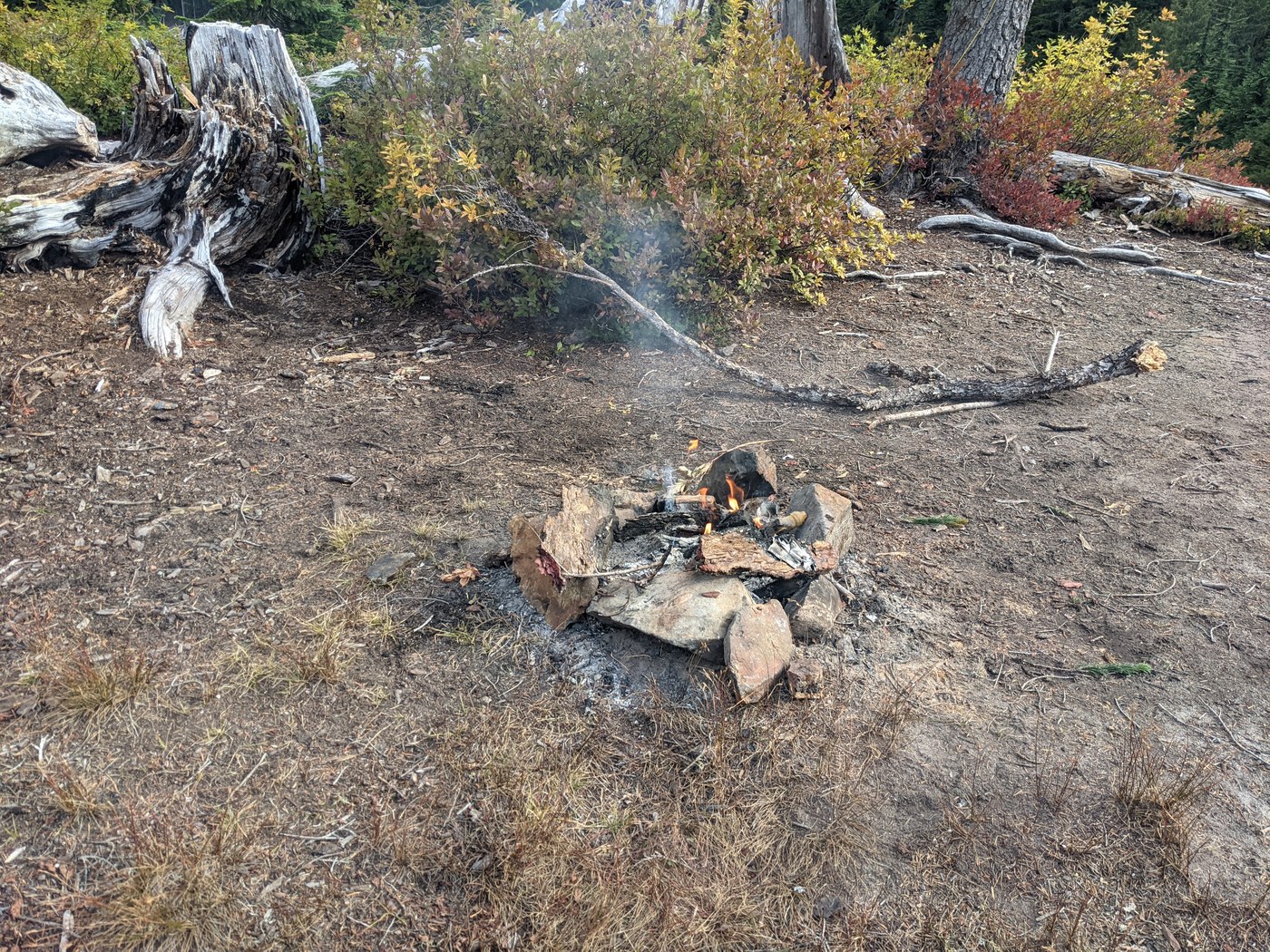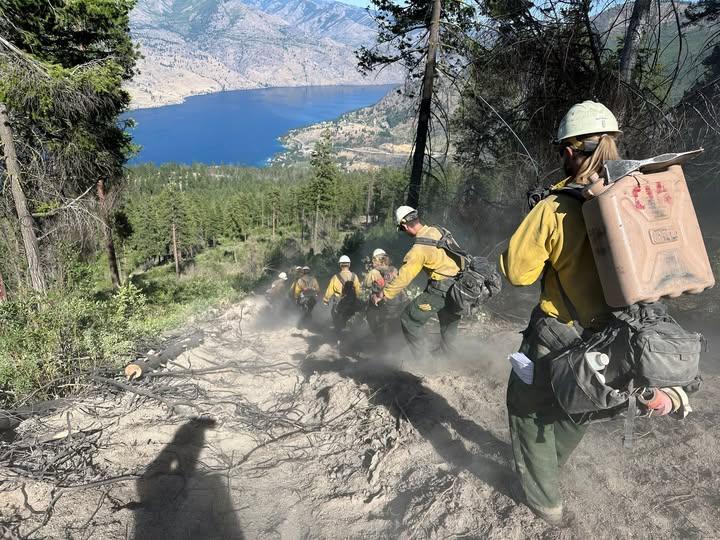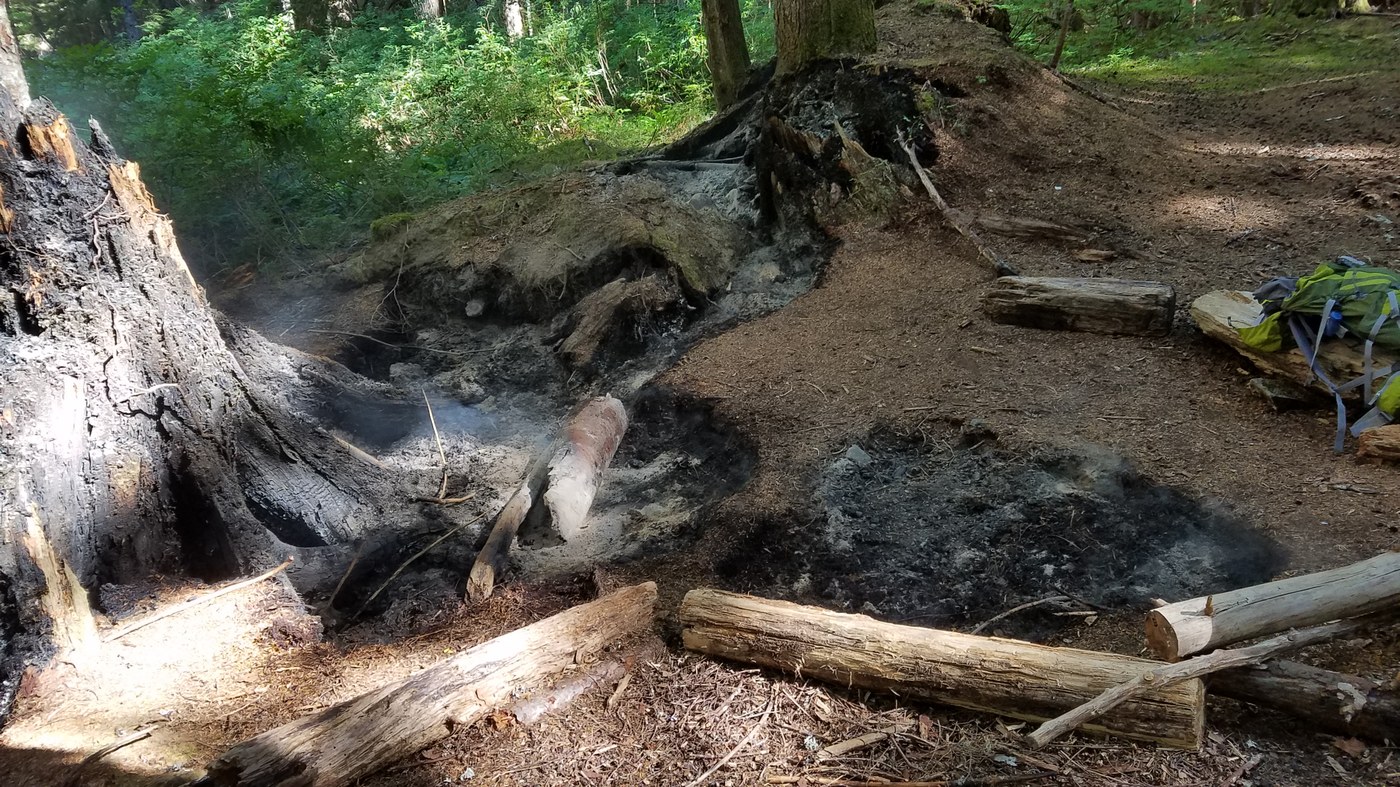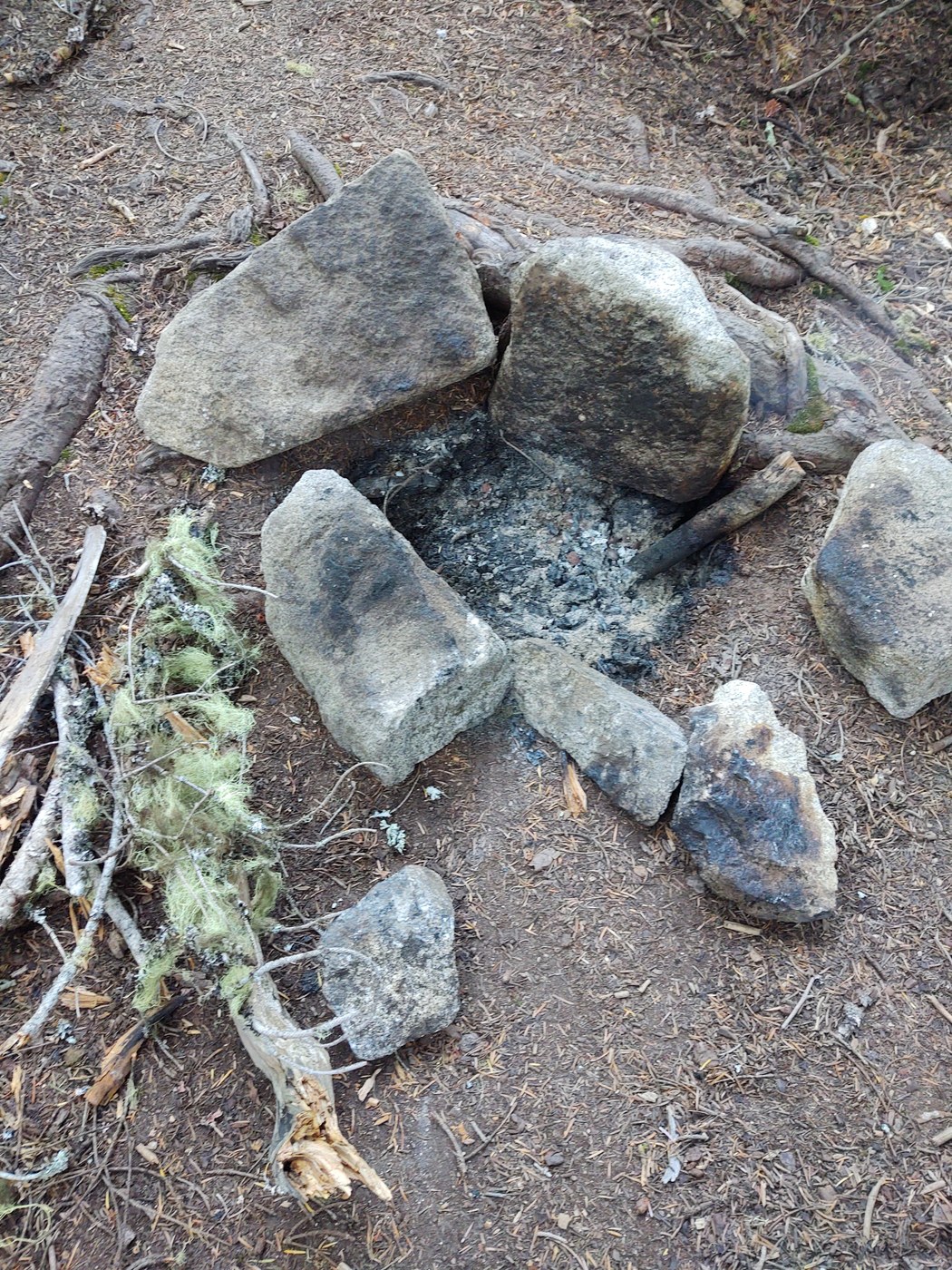Dead out: what to do if you find an abandoned campfire
It’s peak wildfire season. Temperatures are rising into the triple digits and red flag warnings are in effect across multiple counties in Washington State. You’re doing a great job following the restrictions, but do you know what to do if you encounter an abandoned campfire that someone else has left behind?
As a conscientious hiker, you’re probably already aware of burn bans and wildfire risks. You do your part to prevent unnecessary fires. You eat your s’mores cold. You’ve figured out how to create the glow of a campfire with nothing but a water bottle and a headlamp.
Unfortunately, some folks are still learning how and why to safeguard our forests and public lands during wildfire season. As a result, you might come across an abandoned campfire, even with bans in place, while hiking in the backcountry. Do you know how to put it out?
 An abandoned campfire left burning in the Park Lake area from 2022.
An abandoned campfire left burning in the Park Lake area from 2022.
understaffed and chasing lightning strikes
This time of year, persistent hot and dry weather conditions turn forest debris into fuel that burns quickly and easily. Summer thunderstorms produce abundant lightning strikes but very little moisture. Add high winds to the mix, and conditions are primed for rapid-spreading fires throughout a forest.
In addition to weather concerns, there are fewer field staff at the Forest Service and other agencies who would typically be called to respond to fires this year. Trail crews and wilderness rangers often pivot to the role of first responders during wildfire season, and the number of field staff has been drastically reduced this year.
 Firefighting and agency staff resources are needed on bigger fires and to put out lightning strikes. Above, a wildland fire crew build a fireline from Grose Mountain down to Lake Chelan on the Pomas Fire in Glacier Peak Wilderness, which was started by lightning strike earlier this year. Photo credit: Inciweb
Firefighting and agency staff resources are needed on bigger fires and to put out lightning strikes. Above, a wildland fire crew build a fireline from Grose Mountain down to Lake Chelan on the Pomas Fire in Glacier Peak Wilderness, which was started by lightning strike earlier this year. Photo credit: Inciweb
At the Cle Elum ranger district in the Okanogan-Wenatchee National Forest, a fully staffed ranger station used to include upwards of 20 field-based staff, the majority of whom could aid in fire suppression efforts should the need arise. This summer, there are only a handful.
Jaelle Downs, an employee at the Cle Elum ranger district, is one of those few remaining field staff. She offered some insight into how staffing changes could affect response times.
“We’re headed into peak wildfire season, and it’s already been an incredibly hot and dry summer,” Downs said. “Staff will likely have their hands full managing fire starts from lightning strikes across the Forest.”
“Leave No Trace Principle #1 is ‘plan ahead and prepare.’ That includes knowing — and respecting —fire restrictions,” she added. “By respecting campfire closures and Forest-wide restrictions, you can help keep our resources available to protect you and your favorite outdoor places.”
You found a fire ... Now what?
It can be intimidating to come across a fire in a remote setting, especially if you’re by yourself. But by choosing to extinguish an abandoned campfire, you could be preventing a catastrophic wildfire. Follow these steps to safely put out a campfire in the backcountry.
 In 2017, trip reporters near Monte Cristo worked on putting out an improperly-abandoned campfire until they no longer felt safe doing so while other hikers went to notify rangers of the situation. Safety should always be the priority.
In 2017, trip reporters near Monte Cristo worked on putting out an improperly-abandoned campfire until they no longer felt safe doing so while other hikers went to notify rangers of the situation. Safety should always be the priority.
Always prioritize your safety
WTA’s trail work motto is to be safe, have fun, and get some work done — in that order. The same applies to your outdoor adventures: your safety should always come first. If you encounter a fire that’s getting too big to be controlled by yourself, or even if you simply don’t feel comfortable trying to put a fire out, prioritize your safety, return to the trailhead and report the fire. If you’re able, make a note of the fire’s coordinates so that responders can reach the fire as quickly and efficiently as possible.
Take a snack break
Putting out fires takes time. If there’s burning wood or other material, allow it to burn completely to ash if possible. You’ll probably be ready to continue hiking. You’ll be tempted to pour a Nalgene on it and keep moving. But taking the time to fully extinguish a fire in the backcountry could mean the difference between delaying your hiking plans and not having a forest to hike in at all.
Use available water
If there’s water available, use it to completely extinguish the fire. Use a stick to spread the embers around, dousing the whole area thoroughly. Continue pouring water on the fire until it no longer hisses and is cool enough to touch.
Don’t use your drinking water to douse a fire. Not only will you not have enough water to properly put out the fire, but you’ll also suddenly be without drinking water for the remainder of your adventure. Instead, if there’s a stream, lake or other body of water nearby, use that.
Dirt works too!
At WTA, we talk a lot about dirt, but it turns out dirt is useful in other contexts besides trail building. If there’s no water nearby, you can use dirt to snuff out a fire.
With this method, you still want to allow the material to burn to ash as much as possible, then spread the ash and embers to avoid burying a pile of coals that could flare up later. Once the burned material and embers are spread into a thinner layer, cover any remaining material and embers with a layer of dirt and gently stamp it out. Make sure you’re using dirt that is not mixed with organic materials - such as duff, pine needles, twigs, and leaves — to avoid adding more fuel to the fire.
Leave it cool to the touch
As Smokey the Bear reminds us, if it’s too hot to touch, it’s too hot to leave. Check the temperature by holding your hand a few inches above the ashes. Still toasty? Keep adding water or dirt until the remains are cool enough to touch.
Benefits of extinguishing abandoned campfires include: a plot twist in your hiking saga to tell your friends about, hero status and bragging rights for all eternity. But seriously. Help support Forest Service staff by adhering to burn restrictions, and help keep our forests standing by extinguishing abandoned campfires.
 A trip reporter found this fire smoldering in tree roots near Lake Valhalla a few years ago. They dug out and extinguished it over two days while camping nearby.
A trip reporter found this fire smoldering in tree roots near Lake Valhalla a few years ago. They dug out and extinguished it over two days while camping nearby.


Comments